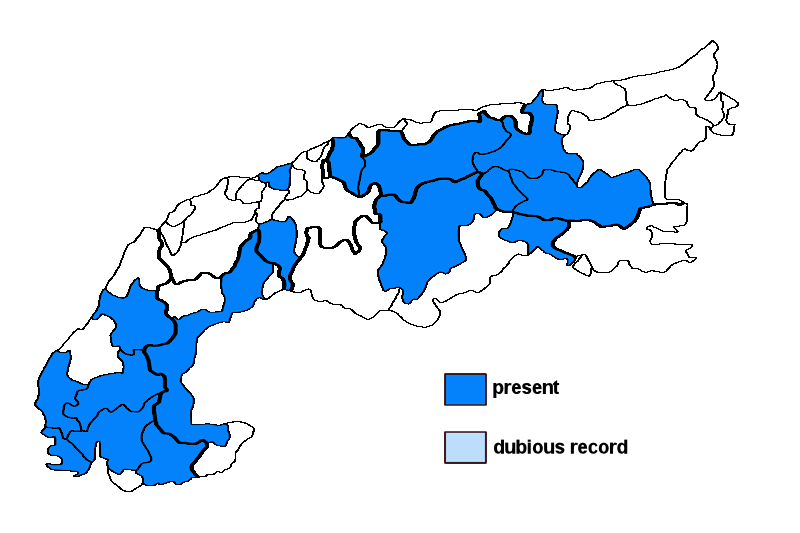Caloplaca diphyodes (Nyl.) Jatta
Syn.: Callopisma diphyodes (Nyl.) Bagl. & Carestia, Callopisma variabile (Pers.) Trevis. var. lecideina Müll. Arg., Caloplaca diphyodes (Nyl.) Jatta var. helygeoides (Vain.) H. Olivier, Caloplaca helygeoides (Vain.) Dalla Torre & Sarnth., Caloplaca lecideina (Müll. Arg.) Clauzade & Rondon comb. inval., Caloplaca variabilis (Pers.) Th. Fr. subsp. diphyodes (Nyl.) Clauzade & Cl. Roux, Caloplaca variabilis (Pers.) Th. Fr. var. lecideina (Müll. Arg.) H. Olivier, Lecanora diphyodes Nyl.
Lichenised.
Substrate: siliceous rocks, intermediate rocks (such as calciferous schists)
Altitudinal range: from the subalpine belt (potential vegetation: open, taiga-like forests dominated by Larix decidua and/or Pinus cembra and Rhododendron) to the nival belt (above the lower limit of perennial snow and glaciers)
Note: known both from the Arctic and the mountains of the temperate zone, this lichen occurs on siliceous rocks in sheltered situations, often along creeks. The species has been much misunderstood, mainly due to the synonymisation with C. lecideina (Müll. Arg.) Clauzade & Rondon, a calcicolous species. The type of C. diphyodes, from Central France, is clearly silicicolous, and the species is more or less aquatic (Roux et coll. 2014).
Austria: Vorarlberg; Tirol; Salzburg; Kärnten; Switzerland: Schwyz; Ticino; France: Alpes-de-Haute-Provence; Haute-Alpes; Alpes-Maritimes; Drôme; Savoie; Vaucluse; Italy: Friuli; Trentino Alto Adige; Piemonte;





